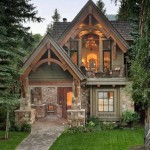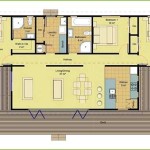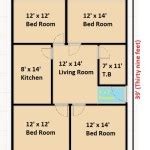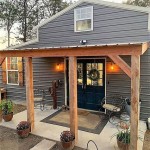Plans for DIY Dog Kennel
Building a DIY dog kennel can be a rewarding project, offering a customized and cost-effective solution for pet housing. Careful planning and execution are crucial for creating a safe and comfortable space for canine companions. This article outlines key considerations and steps for planning a DIY dog kennel project.
Assessing Needs and Defining Scope
Before embarking on the project, defining the kennel's purpose and the dog's needs is paramount. Several factors should be considered:
- Dog's size and breed: Larger breeds require significantly more space than smaller breeds.
- Climate: The kennel must offer protection from extreme temperatures, both hot and cold.
- Intended use: Will the kennel be used for short-term confinement or as a more permanent living space?
- Budget: Material costs can vary significantly, so establishing a budget early on is essential.
- Local regulations: Check local ordinances regarding kennel size, placement, and materials.
Choosing the Right Location
Selecting the appropriate location for the kennel is crucial for the dog's comfort and safety. Consider the following:
- Drainage: Ensure the area has proper drainage to prevent water accumulation and muddy conditions.
- Shade and sunlight: Provide a balance of shade and sunlight to protect the dog from overheating and offer opportunities for basking.
- Proximity to the house: Consider the convenience of access for cleaning and interacting with the dog.
- Protection from wind: Locate the kennel in a sheltered spot to minimize exposure to strong winds.
- Accessibility to utilities: Consider the need for electricity and water access for lighting and cleaning.
Designing the Kennel Structure
The design of the kennel should prioritize the dog's well-being and safety. Important design considerations include:
- Size and dimensions: Ensure ample space for the dog to stand, turn around, and lie down comfortably.
- Flooring: Choose durable and easy-to-clean flooring materials, such as concrete or pavers.
- Walls and roofing: Select weather-resistant materials that provide adequate insulation.
- Ventilation: Proper ventilation is essential for maintaining fresh air circulation and preventing the buildup of moisture and odors.
- Door and gate: Install a secure door and gate system to prevent escapes.
- Elevated platform: An elevated platform can provide a comfortable resting area and protect the dog from cold or damp ground.
Selecting Materials
Choosing appropriate materials is vital for the kennel's durability and longevity. Consider the following options:
- Wood: Treated lumber offers a cost-effective and aesthetically pleasing option, but requires regular maintenance.
- Metal: Metal framing and chain-link fencing are durable and low-maintenance but can be susceptible to rust.
- Concrete: Concrete provides a sturdy and long-lasting foundation but can be more expensive.
- Plastic or composite materials: These materials are lightweight and easy to clean but may not be as durable as other options.
Gathering Tools and Equipment
Assemble the necessary tools and equipment before starting construction. Typical tools include:
- Measuring tape and level
- Saw and drill
- Hammer and nails or screws
- Shovel and rake
- Safety glasses and gloves
Construction Process
Follow a step-by-step construction plan, ensuring accurate measurements and secure connections throughout the process. Key construction phases include:
- Site preparation: Clear and level the designated area, ensuring proper drainage.
- Foundation construction: Build a sturdy foundation using concrete, pavers, or gravel.
- Framing and wall construction: Erect the kennel walls, ensuring proper alignment and stability.
- Roofing installation: Install a weatherproof roof to protect the dog from the elements.
- Door and gate installation: Install a secure door and gate system.
- Flooring installation: Lay down the chosen flooring material.
Finishing Touches and Enhancements
Once the basic structure is complete, consider adding finishing touches to enhance the kennel's functionality and aesthetics. These might include:
- Painting or staining: Protect and enhance the appearance of wooden components.
- Adding insulation: Improve temperature regulation within the kennel.
- Installing shade cloth or awnings: Provide additional shade during hot weather.
- Adding bedding and toys: Create a comfortable and enriching environment for the dog.
Regular Maintenance
Regular maintenance is essential for keeping the kennel in good condition and ensuring the dog's safety and comfort. Maintenance tasks include:
- Cleaning and disinfecting: Regularly clean and disinfect the kennel to prevent the buildup of bacteria and odors.
- Repairing damage: Promptly address any damage to the structure, such as broken boards or loose fencing.
- Checking for hazards: Regularly inspect the kennel for potential hazards, such as sharp edges or protruding nails.

Diy Plans For Large Double Dog Kennel Crate Furniture

8x12 Dog Kennel Plans 2 Stall Shelter

Medium Dog Kennel Diy Plans Crate Furniture Digital

Diy Dog Crate How To Build A Kreg Tool

How To Build An Outdoor Chain Link Dog Kennel Family Handyman

3 Ways To Build A Dog Crate Wikihow

Diy Plans For Xl Double Dog Kennel Extra Large Crate

Dog Kennel Building Plans And Diy Runs

Large Wood Pet Kennel End Table Ana White

Large Wood Pet Kennel End Table Ana White
Related Posts








